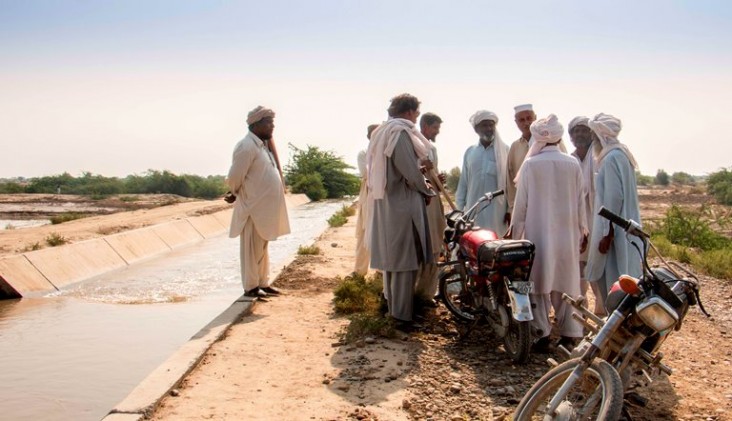
For Immediate Release
The U.S. Embassy Islamabad celebrates this year’s World Water Day, March 22, as the U.S. Agency for International Development (USAID)Gomal Zam Irrigation Project comes to a close. This $72 million project, which began in 2011, is now providing year-round irrigation for 191,000 acres in Tank and Dera Ismail Khan Districts of Khyber Pakhtunkhwa (KP) province. Through its network of 265 kilometers of irrigation canals, which were built in collaboration with the Water and Power Development Authority, the project will increase business, trade, and employment opportunities for 30,000 households.
USAID is working in partnership with the Government of Khyber Pakhtunkhwa’s Department of Agriculture to support local farmers in producing market-ready, high-value crops. The project has also helped form 400 water user associations and women’s interest groups that help the local population sustainably manage the irrigation system.
“The Gomal Zam Irrigation Project will create jobs and increase incomes for the residents of KP,” USAID Mission Director John Groarke said. “Access to clean drinking water and irrigation water for crops is essential for the development and stability of any community.” A farmer from the Gomal Zam command area, Mairaj Din, expressed his gratitude, commenting, “We knew that our lives would never be the same when we saw this running water. We are thankful to USAID for turning around our fortunes and the future of our children.”
British engineers first conceived the Gomal Zam Dam and irrigation scheme in the second half of the 19th century, and preliminary planning to build the dam began in the 1960s. In 2009, then-U.S. Secretary of State Hillary Clinton announced U.S. government support to complete the dam to support power generation, irrigation, and flood control.
The first phase of this project, the construction of the Gomal Zam dam in South Waziristan, was completed in 2013 with funding from the United States and the Government of Pakistan. The dam now generates 17.4 megawatts of clean energy and can store up to 1.14 million acre feet of water.







Comment
Make a general inquiry or suggest an improvement.